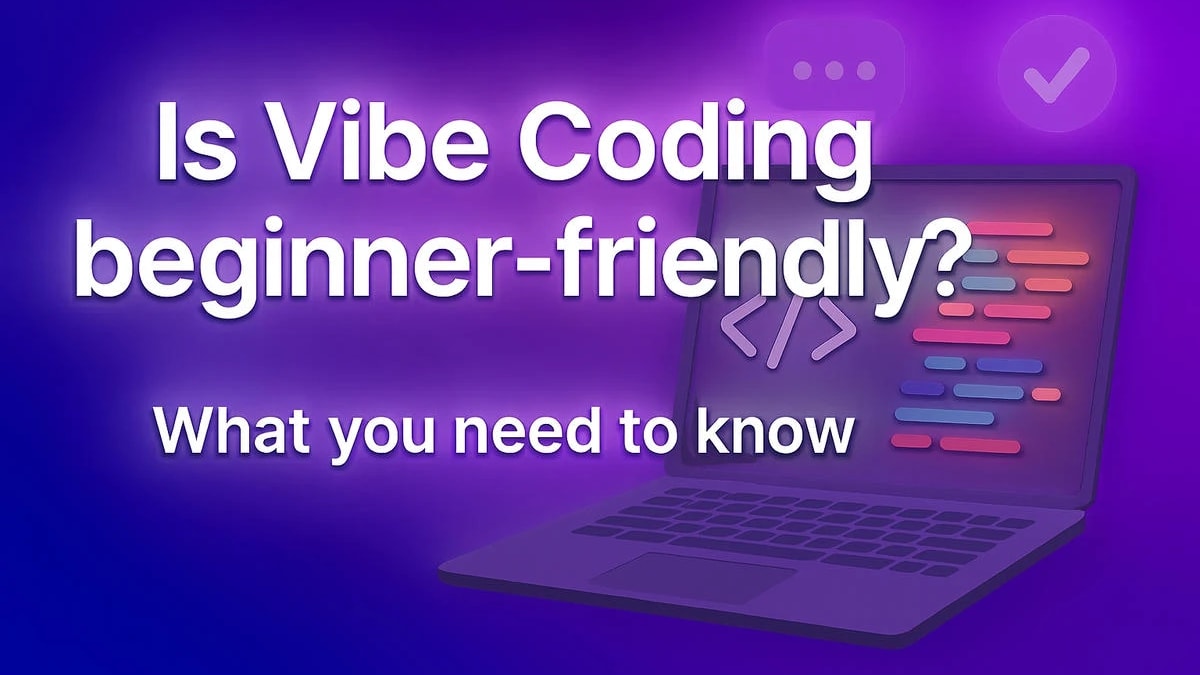Can Beginners Adopt Vibe Coding, or Is It Meant for Experienced Developers Only?

What is Vibe Coding, Really?
Origin and Philosophy
Vibe Coding is all about tapping into your intuition — feeling your way through code rather than relying solely on rules and syntax. It’s the natural evolution of coding once you move past the "Hello World" phase.
Comparing Traditional vs. Vibe Coding Approaches
Where traditional learning is rigid and rule-based, Vibe Coding is fluid. Think school textbooks vs. freestyle sketching. One is structured, the other expressive.
Is Vibe Coding Beginner-Friendly?
Key Traits That Make It Accessible
Vibe Coding emphasizes understanding patterns, recognizing flows, and feeling what comes next. These are things beginners can pick up, especially if they’ve dabbled in music, art, or language learning.
Flow vs. Syntax: Why Feel Matters
When you focus too much on syntax early on, you get caught in the weeds. Vibe Coding flips the process: feel first, polish later.
Simplifying the Learning Curve Through Intuition
Pattern Recognition Over Memorization
Learning coding patterns is like recognizing chords in music. The more you see them, the more natural they become. Vibe Coding encourages this recognition through practice rather than repetition.
Visual Learning and Hands-On Practice
Tools like visual code editors and low-code platforms help build confidence. It’s all about experiencing what works — and what doesn’t — in real-time.
The Importance of Building a ‘Feel’ for Code Early On
Learning to Code Like You Learn a Language
No one becomes fluent in Spanish by memorizing verbs. The same applies here. You speak, you make mistakes, you learn. Vibe Coding is like speaking the language of code with an accent — and refining it with use.
Gut Instincts in Debugging and Refactoring
Beginners often think debugging is for pros. But with Vibe Coding, even a newbie can sense when something’s off. That’s gold.
Teaching with Vibe: Bootcamps and Workshops
Examples of Vibe-Focused Learning Programs
Some progressive coding bootcamps integrate Vibe methodology — pairing students to build projects in real time, focusing less on theory and more on intuition.
Classroom Exercises that Develop Flow
Live coding, creative challenges, and hackathons develop the rhythm. It's more dancing, less dictation.
Challenges Newbies May Face with Vibe Coding
Lack of Structure for Some Learners
Not everyone thrives in a free-flow environment. Some need rules to break them later — and that’s okay.
Misinterpreting Intuition as Guesswork
Feeling your way doesn’t mean guessing. Vibe Coding still requires logic — but it’s like cooking without a recipe instead of tossing random ingredients together.
How Mentorship Can Bridge the Gap
Pair Programming and Real-Time Feedback
When newbies code with mentors, they absorb subtle patterns and practices — almost like osmosis. It’s Vibe Coding in action.
Peer Learning in a Vibe Environment
Learning alongside others, sharing mistakes and breakthroughs, enhances your sense of flow. It becomes a shared rhythm.
Resources Tailored for Vibe Learning Styles
Interactive Platforms and Sandbox Environments
Websites like Replit, CodePen, or Glitch encourage exploration. You break, fix, and learn — all in the moment.
Vibe-Based Coding Communities
Communities like r/learnprogramming or Discord dev hubs provide real-time support, where others help you stay in the zone.
Blending Logic with Emotion in Early Coding Practice
Emotional Intelligence in Programming
Code reflects you. If you’re frustrated, it shows. Vibe Coding encourages you to be aware of your emotional state and how it impacts your problem-solving.
Learning to Code Like a Musician Practices a Song
Play. Repeat. Adjust. Master. Coding is no different when done with vibe. You’re not just typing — you’re performing.
When to Introduce Vibe Coding in the Learning Journey?
You don’t need to wait. Beginners can (and should) learn Vibe Coding from day one, alongside fundamentals. Think of it as adding color to outlines.
The Role of Tools and Environments
Coding environments like VS Code with extensions, themes, and live previews can elevate the vibe. Create a space where code feels alive.
Developer Stories: Beginners Who Thrived With Vibe
From YouTubers who went from zero to full-stack with no CS degree, to bootcamp grads who landed jobs within 6 months — many started by embracing flow over form.
Final Verdict: Is Vibe for Beginners or Experts?
Vibe Coding isn’t reserved for the elite. It’s for anyone ready to connect deeply with code. Beginners who embrace it early often find themselves growing faster, enjoying the journey more, and building a strong foundation for mastery.
Conclusion
So, can beginners adopt Vibe Coding? Heck yes! It’s not about age, experience, or education. It’s about curiosity, rhythm, and intuition. While structure has its place, the true magic happens when you vibe with your code.
Whether you’re opening your first code editor or building your tenth project — don’t just write code. Feel it.

Deepak
Vibe Coder specializing in AI-powered development and software architecture.